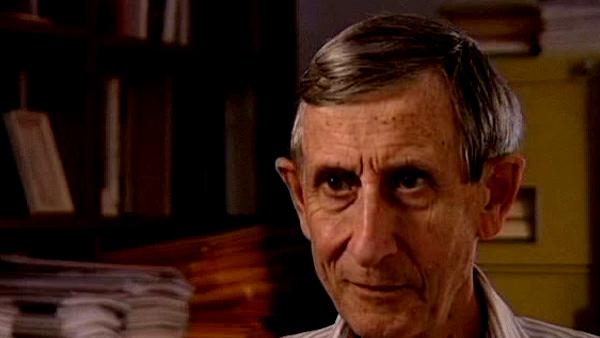NEXT STORY

Other tutors at Cambridge: Dirac, Jeffreys, Eddington
RELATED STORIES

NEXT STORY

Other tutors at Cambridge: Dirac, Jeffreys, Eddington
RELATED STORIES


|
Views | Duration | |
|---|---|---|---|
| 21. Political feelings in the '30s: Communism and pacifism | 1620 | 05:27 | |
| 22. Being on the outside | 1 | 1504 | 00:38 |
| 23. Pure mathematics at Cambridge: the influence of Besicovitch | 3 | 2407 | 04:16 |
| 24. Relationship with Besicovitch | 1817 | 01:42 | |
| 25. GH Hardy and JE Littlewood's lectures | 2599 | 02:13 | |
| 26. Littlewood's Tauberian theorem and Dyson's ferromagnet paper | 1809 | 03:07 | |
| 27. Other tutors at Cambridge: Dirac, Jeffreys, Eddington | 2462 | 03:10 | |
| 28. Oscar Hahn | 2 | 1658 | 02:08 |
| 29. The Hahn Family - Judaism | 1 | 1772 | 01:03 |
| 30. The walk from Cambridge to London | 1 | 1603 | 01:16 |


He wrote this marvelous paper about the Tauberian theorem, the (1/n) theorem, which tells that a series that is summable in the Abel sense, and has terms bounded by a constant times (1/n) is also convergent. So that was the big Tauberian theorem which Littlewood proved, and his way of proving it was again a tour de force done by invoking a completely unmotivated new parameter which turned out to be the key to the proof. And then in my existence as a physicist one of the things I did was to prove the existence of a ferromagnet in one dimension, which was something that hadn't been done before, and I constructed this ferromagnet - this was a very 'Besicovitchy', a sort of Besicovitch construction of the ferromagnet as a hierarchical array of spins which has a ferromagnetic transition from order to disorder in spite of being one dimensional. And then... but in order to prove the long range order - what I proved was that the long range order is discontinuous at the transition, that it goes discontinuously from having a spontaneous magnetisation to being disordered, so it means the ordered phase has a magnetisation which remains finite away from zero right up to the transition point. And to prove that, I used Littlewood's trick of bringing in a unmotivated new parameter - so it was a proof; although the construction was Besicovitch, but the proof was Littlewood. Anyway, so I dedicated this paper to him and it was written just, I think, 60 years after Littlewood's proof had been published and so I dedicated it to the 60th anniversary of Littlewood's proof. And I got a very nice letter from Littlewood in response, saying that as far as he knew that was the only time that a mathematician had actually celebrated the 60th anniversary of a proof.
[Q] But he also said very complimentary things; I mean it was the most complimentary statement made to him by anyone, am I right?
Yes, something like that which I doubt whether that was true, but anyway it was a very gracious acknowledgment. No, I was delighted that he was still around when this happened. Whereas with Hardy - of course Hardy died much younger, I was never able to thank Hardy for the Jordan's Cours d'analyse which I'm sure he actually put in the library, but he died before we could thank him for it.
Freeman Dyson (1923-2020), who was born in England, moved to Cornell University after graduating from Cambridge University with a BA in Mathematics. He subsequently became a professor and worked on nuclear reactors, solid state physics, ferromagnetism, astrophysics and biology. He published several books and, among other honours, was awarded the Heineman Prize and the Royal Society's Hughes Medal.
Title: Littlewood's Tauberian theorem and Dyson's ferromagnet paper
Listeners: Sam Schweber
Silvan Sam Schweber is the Koret Professor of the History of Ideas and Professor of Physics at Brandeis University, and a Faculty Associate in the Department of the History of Science at Harvard University. He is the author of a history of the development of quantum electro mechanics, "QED and the men who made it", and has recently completed a biography of Hans Bethe and the history of nuclear weapons development, "In the Shadow of the Bomb: Oppenheimer, Bethe, and the Moral Responsibility of the Scientist" (Princeton University Press, 2000).
Tags: Cours d'analyse, Niels Henrik Abel, JE Littlewood, Abram Besicovitch, GH Hardy, Camille Jordan
Duration: 3 minutes, 8 seconds
Date story recorded: June 1998
Date story went live: 24 January 2008